Хаас за Бахрейн
Ромен Грожан:
The Australian Grand Prix was shaping up to be a milestone race for Haas F1 Team. How do you rebound from such a difficult set of circumstances, especially when the result could’ve been so rewarding?
Well, put it this way – I’d rather retire fighting for fourth or fifth position than finishing every race in 15th position.
Despite the massive disappointment in the outcome at Australia, you made it a point to find each crew member, shake their hand and essentially say we’re in this together. How were you able to shake off your own disappointment and be there for your crew?
It’s a team sport, and I believe my team has always been there for me when I needed them. Everything is pushed to its maximum –the driving, the engineering and the pit stops. Mistakes can happen. We’re a team, and I was happy to be there for my boys, as I know they’re happy to be there for me when I need them to be.
The silver lining in Australia was that the Haas VF-18 had speed. How comforting was it to carry the speed from winter testing into the reality of the Australian Grand Prix?
It was great, it was amazing, and it gives us a lot of hope for the future. Obviously, we need to see how it goes on different circuits, but I think it’s a very positive start. We’re all very much looking forward to going to the next race.
How did the car feel throughout the Australian Grand Prix – from practice and qualifying and on into the race?
It felt good. We’ve got a very good baseline and we know already where we can improve the car. We’re working on that. It’s exciting to see that we focus on getting some good performance from the car, rather than just trying to survive or be at the back. I think we’re in a good place. We can’t wait to get back racing.
More specifically, can the speed you displayed in Australia carry over to Bahrain?
Time will tell, but I’m hoping so, because it’s much more fun fighting at the front of the field than behind.
How important is it to have a strong finish in Bahrain, where the disappointment from Australia can be forgotten?
A good result will help us to forget Australia. Let’s get to Bahrain, let’s do our work, like we did in Australia, focus on our jobs and see where we are at the end. Hopefully, we can have another good surprise.
In six career Formula One races at Bahrain, you’ve had five point-paying finishes, including two podiums (back-to-back third-place finishes in 2012 and 2013). And in scoring those podiums, you came from seventh and 11th on the grid. In fact, in every race you’ve picked up positions from where you qualified – 24 positions in all. Is there something about Bahrain that plays to your strengths?
I love driving in Bahrain. I’ve always had a good feeling there, and I think it’s a really exciting track for racing and overtaking. We’ll see how it goes again. As I said, it’s always given me a good feeling, and I’m hopeful I can keep it going.
You’ve proven that you can overtake at Bahrain. Where do you overtake and how do you do it?
It’s one of those tracks where there are many opportunities to overtake, which is amazing. Obviously there’s turn one, but turn three, turn 11, turn 15 – they all make it probably one of the best circuits for racing.
The amount of run-off area at Bahrain is high. Does that allow you to push the limits of your car and its tires more than at some other venues?
It’s certainly easier to find braking points in Bahrain than it is in Monaco or Singapore. You know if you miss it, or overshoot your braking point, you’re just going to go straight and have another go on the next lap. Some street circuits it’s straight into the wall. It’s a bit easier to get used to it and find the limit.
Are you able to learn more at a venue like Bahrain because you’re able to push harder and discover a car’s limits?
I think once we’re on the racetrack, we push it all the time to the maximum, especially in qualifying. We just need to see how we go at different circuits.
With the race beginning in the late afternoon and ending at night, how much does the track change as the air and track temperatures cool?
That’s the big challenge of Bahrain, as it is with Abu Dhabi. It’s something you really need to work on in FP2. You have to make sure the car works well in warmer conditions and then in the cooler conditions later in the day.
What is your favorite part of the Bahrain International Circuit and why?
I quite like turns five, six and seven. They’re high-speed as you approach the downhill hairpin. You get a good feeling. The corners are flying together.
Is there a specific portion of the Bahrain International Circuit that is more challenging than other aspects of the track? If so, why?
Turns one and two are pretty challenging. It’s a busy hairpin with big braking. Then you really want to go early on throttle as you’ve got a long straight line. Turn two is always a bit tricky on the rear end.
Explain a lap around the Bahrain International Circuit, especially now after having competed there with the faster, current-generation car.
I think the biggest difference with the new generation of car is at turns five, six and seven. Later it’s (turns) 11, 12 and 13 – a series of mid- to high-speed corners where we carry much more speed than we used to. Those are the places where you have the biggest differences and you can gain quite a lot of lap time. When you carry more speed, it means there’s less margin for error. You just have to go faster and get more feeling.
Кевин Магнусен: The Australian Grand Prix was shaping up to be a milestone race for Haas F1 Team. How do you rebound from such a difficult set of circumstances, especially when the result could’ve been so rewarding?
We try to refocus and look forward to the next one. We take the positives that we can from Australia, which is we have a good car. We take that forward to Bahrain.
Despite the massive disappointment in the outcome at Australia, you made it a point to find each crew member, shake their hand and essentially say we’re in this together. How were you able to shake off your own disappointment and be there for your crew?
We win together and we lose together. Everyone makes mistakes sometimes – we have to make room for that – but we’ll learn from that and improve together.
The silver lining in Australia was that the Haas VF-18 had speed. How comforting was it to carry the speed from winter testing into the reality of the Australian Grand Prix?
It was good to have a competitive car in Australia. I enjoyed driving the car all weekend, but there’s no guarantee we’ll be that strong in Bahrain, so we have to work hard to try and understand the car and make sure we carry the performance forward into the next race.
How did the car feel throughout the Australian Grand Prix – from practice and qualifying and on into the race?
It felt good!
How good did it feel to handily make into Q3 and then run up front in the race?
It felt really good being competitive and being able to compete at the right end of the series. I hope we can continue that way.
More specifically, can the speed you displayed in Australia carry over to Bahrain?
I’m not taking anything for granted. Again, we have a good car, but I’m cautious. We’ll take it one race at a time.
How important is it to have a strong finish in Bahrain, where the disappointment from Australia can be forgotten?
It would be great to have a good result in Bahrain after such big disappointment in Australia. We’ve got to start building points, as we’ve fallen behind after Australia. We’ve got to catch up.
Bahrain has proven to be a track where overtaking is more than possible. Where do you overtake and how do you do it?
Bahrain is a much better circuit for overtaking than Australia. I don’t think we’re going to have as many negative comments about a boring race in Bahrain because the track layout is a lot better for racing and overtaking. I’m sure we’ll see an exciting grand prix.
The amount of run-off area at Bahrain is high. Does that allow you to push the limits of your car and its tires more than at some other venues?
Yes it does. I still prefer to have not so much run-off. It means that you are challenged more and the window for error is narrower.
With the race beginning in the late afternoon and ending at night, how much does the track change as the air and track temperatures cool?
It changes the behavior of the tires, the wear life and so on. It’s something that you need to anticipate before the race.
What can you do to combat those changing track conditions during the race?
Stuff like setup on the car, tire pressures, front wing – these are all things you adjust accordingly for when the temperatures drop.
What is your favorite part of the Bahrain International Circuit and why?
Turns 11, 12 and 13 are a good high-speed section of the track. You’re carrying lots of speed into those corners.
Is there a specific portion of the Bahrain International Circuit that is more challenging than other aspects of the track? If so, why?
Carrying the speed through turns 11-13.
Explain a lap around the Bahrain International Circuit, especially now after having competed there with the faster, current-generation car.
Bahrain is a challenging circuit. There are good opportunities for overtaking and close racing.
Гюнтер Щайнер: The Australian Grand Prix was shaping up to be a milestone race for Haas F1 Team. How do you rebound from such a difficult set of circumstances, especially when the result could’ve been so rewarding?
For sure, it’s difficult, but that’s racing. I’ve been doing this a long time. There are moments like this, with real downs. The good thing is the car seems to be quick, so you look forward to going to the next race and making sure you do a better job. We still have to go and do it in Bahrain, but I think we’re in a good position do something similar like we did in Australia performance-wise.
What protocols can you put in place to mitigate the cross-threading of a wheel nut and, in turn, sending the car out of the pits with a loose wheel?
As a team, we made mistakes. We had too much work to do on the car and didn’t practice enough. I think the key to all of this is to get the practice in before the race so that we’re prepared for all aspects of the race.
What do you do to get the crew refocused so that everyone is ready for Bahrain?
You just have to explain what happened and be honest about it. We made mistakes, but we do have processes in place. Last year, in the second half of the season, we had some of the best pit stops on pit lane. We can do it. I think the lack of practice produced the result in Australia. Nevertheless, stuff like this happens. You get over it and move on.
As technological as Formula One is, Australia showed it still has a robust human element. For Haas F1 Team and its midfield battle, how crucial are its people to achieving success?
It’s all down to people. Everybody on the team can be proud of what we’ve achieved over the last couple of years, and with what we’re going to achieve this year and next year. We have a good bunch of people who have put us in this position where we look very competitive this year.
The silver lining in Australia was that the Haas VF-18 had speed. How comforting was it to carry the speed from winter testing into the reality of the Australian Grand Prix?
It was very comforting. I was optimistic, but cautiously. I’m still cautious. One race doesn’t make a full season. We need to be humble and just keep on working hard. We have to try to do the same as we did in Australia, as we did in testing, not lose focus, but just keep on going, and I’m sure we’ll achieve similar results.
How good did it feel to handily make it into Q3 and then run up front in the race?
That is what you work for, and when it is achieved, it’s a great moment for the team. It comes with confidence and experience.
Some say Australia is a bit of an anomaly in Formula One, where a team’s performance at Melbourne Grand Prix Circuit is not indicative of how a team will perform in other races, notably Bahrain. What do you say to that?
I would say I’m still cautiously optimistic. I would never be arrogant and say, ‘Oh we will do the same in Bahrain,’ but, for sure, we will try to do the same. The car showed speed in Barcelona and Melbourne. There is a point, maybe after China, where we will really know where we are.
More specifically, can the speed you displayed in Australia carry over to Bahrain?
We will see when we get there. I think the car is competitive. Will it be the same as Australia, compared to the opposition? I don’t know, because I don’t know what they’re doing. Again, I’m cautiously optimistic that it can be done.
How important is it to have a strong finish in Bahrain, where the disappointment from Australia can be forgotten?
I think if we achieve a good result in Bahrain, we will forget about Melbourne. If we don’t, we’ll dwell over what happened in Australia until the time we have a fantastic result, or time gets us over it. The aim is to do everything right and come home with a good result.
The speed Haas F1 Team showed in Australia led some in the paddock to infer it was because of the team’s Ferrari ties. But you’ve been with Haas F1 Team since its inception and have firsthand knowledge of the time, effort and energy that have gone into building this team. What’s your reaction when people try to dilute Haas F1 Team’s achievements by saying it’s because of Ferrari?
Everybody is allowed to have an opinion. Some people have an opinion, which I think is based on no facts. It does not have a lot of value to me. I think the whole of Haas F1 Team can be proud of the work done between last year and over the winter to produce the VF-18 and get it into its competitive condition. It’s merit to them. They can be proud. If people have an issue, fine with me. We report what we are doing, like everybody else, to the FIA. That’s why I’m more than confident we are not doing anything wrong. I’m perfectly fine with how we do business. We design our own aero, as per the regulations, and yes, we use mechanical parts from Ferrari, but everybody’s known that for the past two years. We are well above board, and happy to be where we are.


















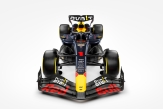
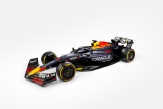

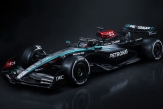
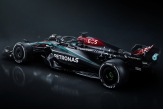


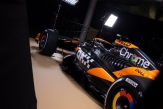

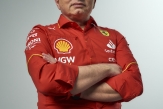
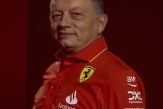
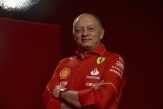

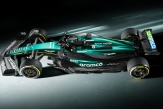

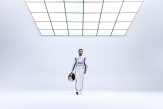


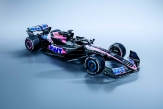
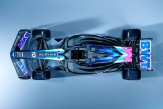

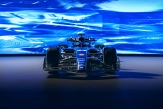
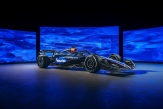
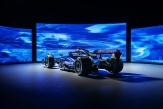
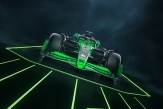
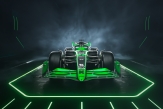
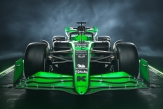

15/04/2024 от Огнян Тенчев (drJeckyll), няма коментари